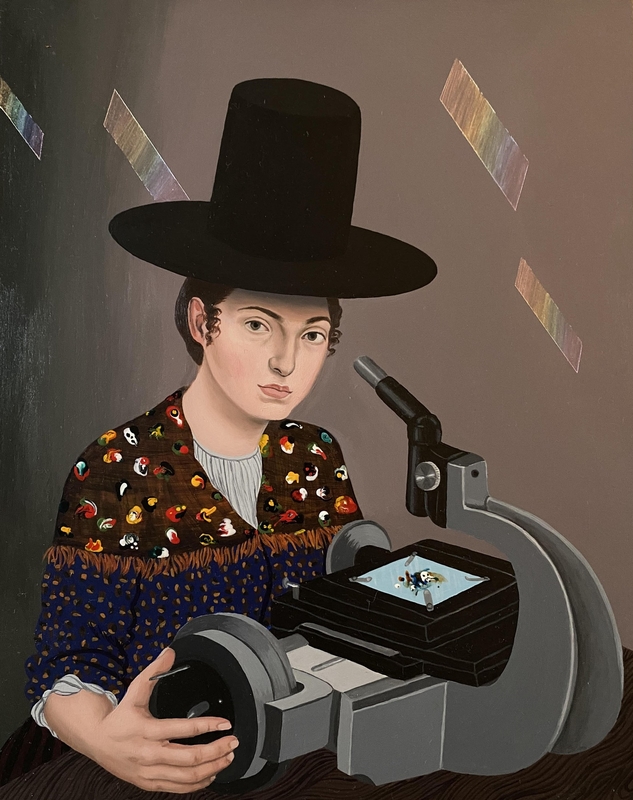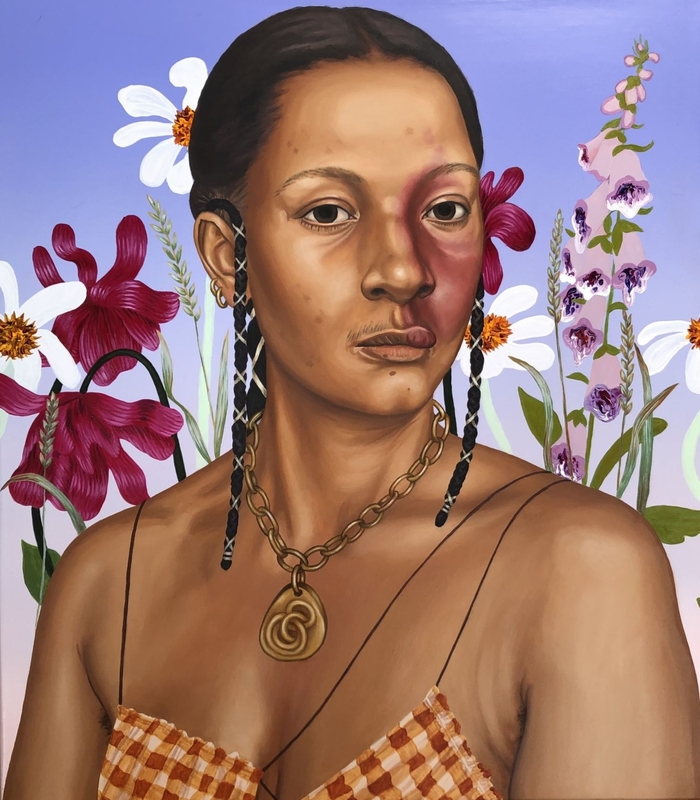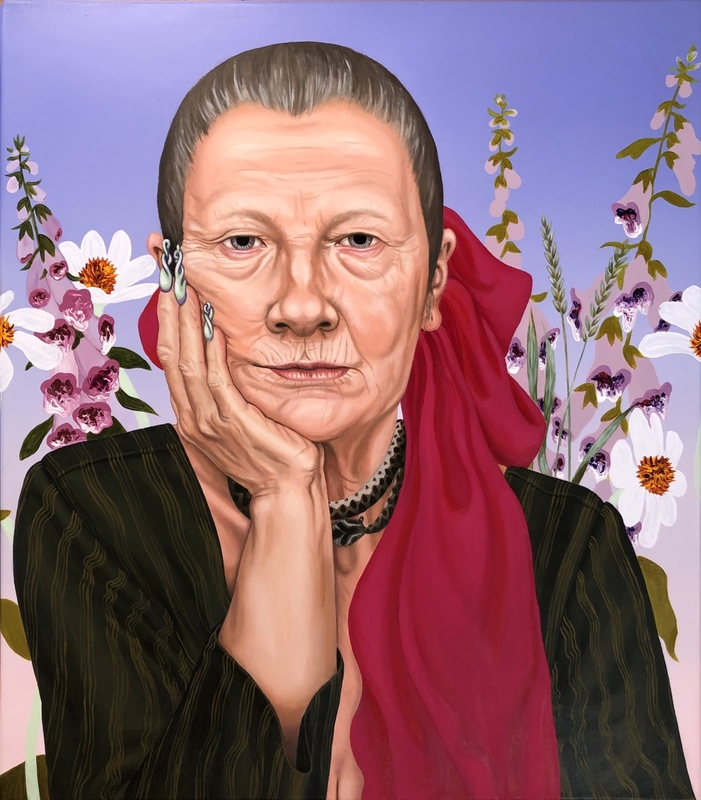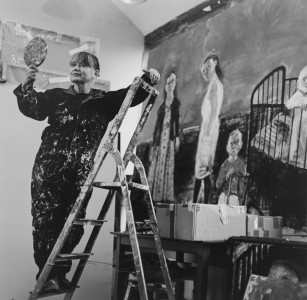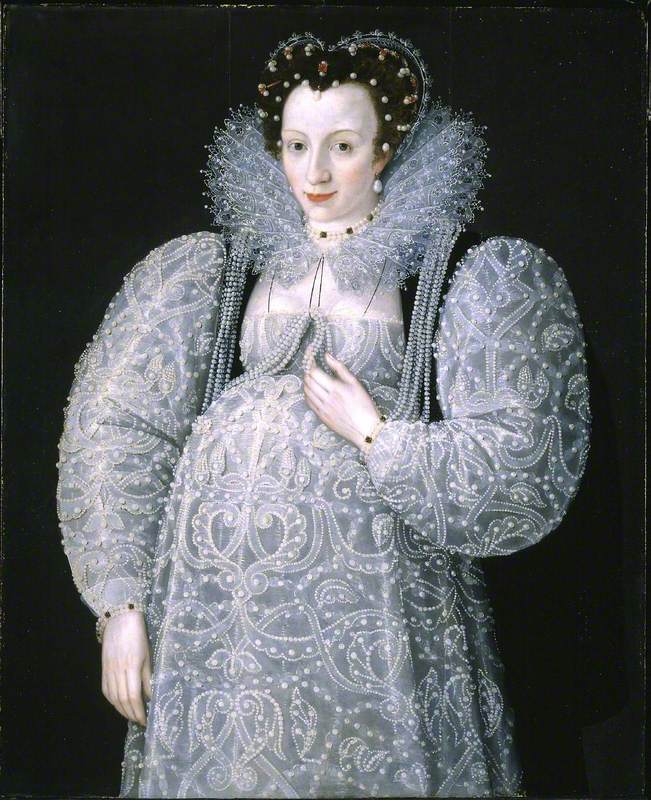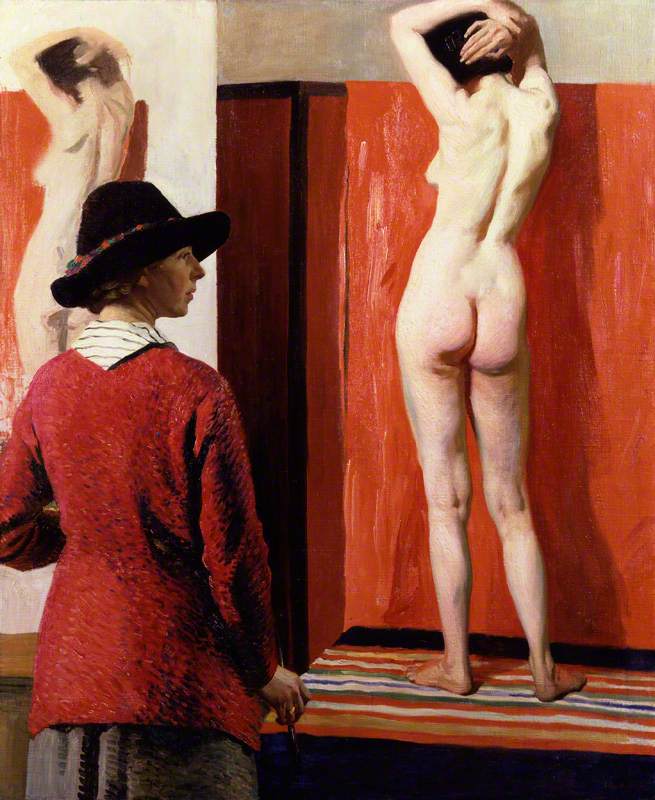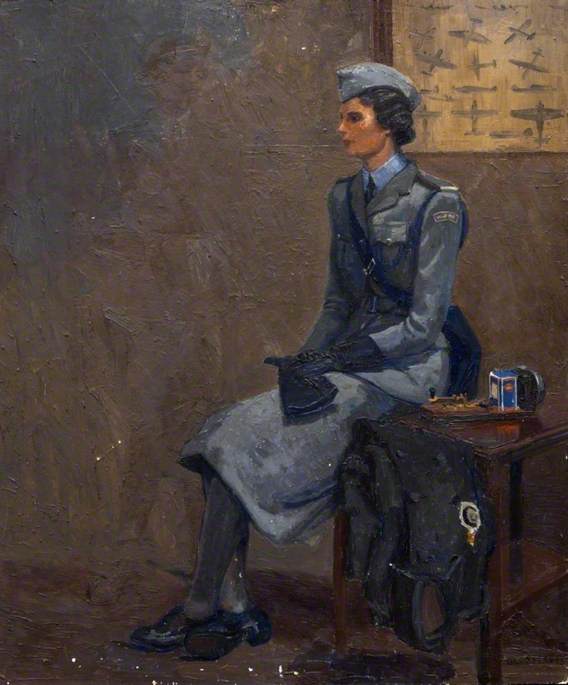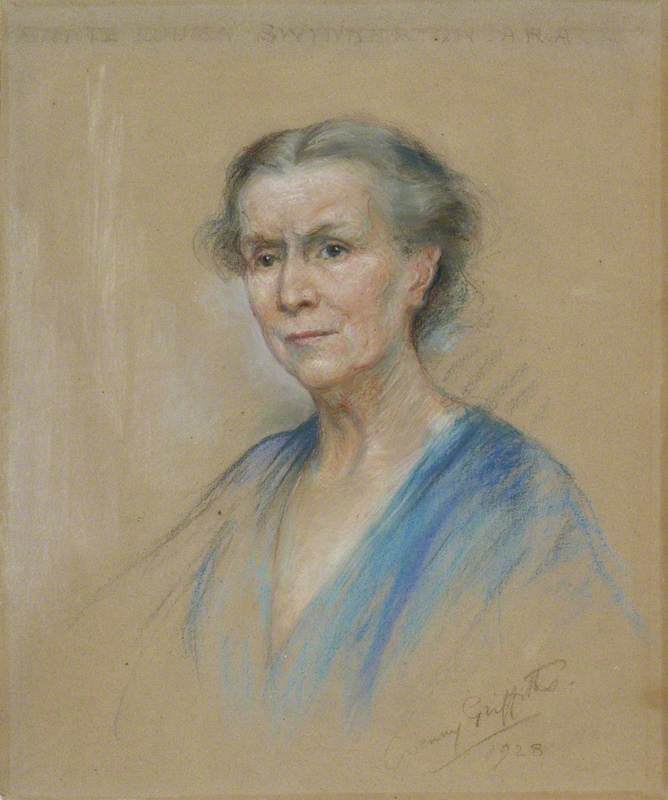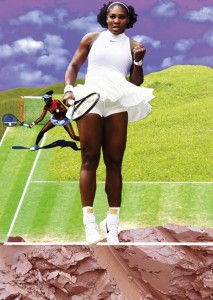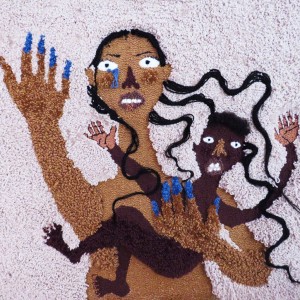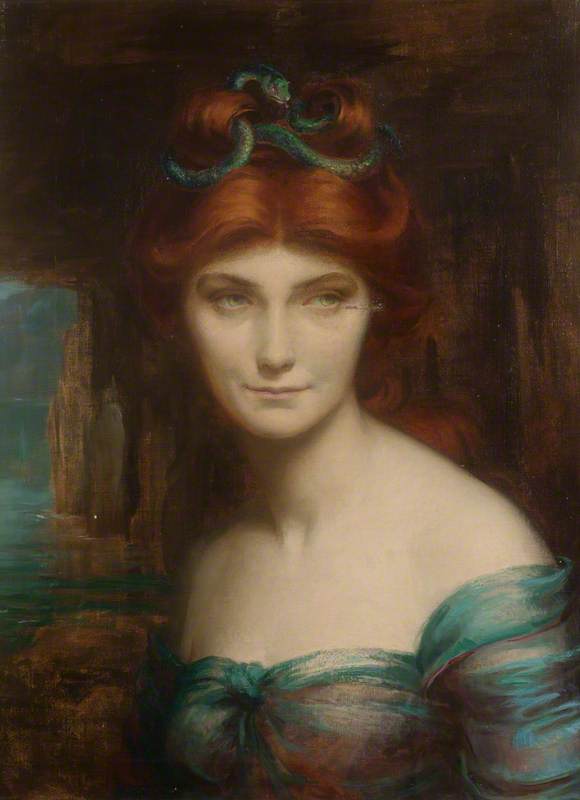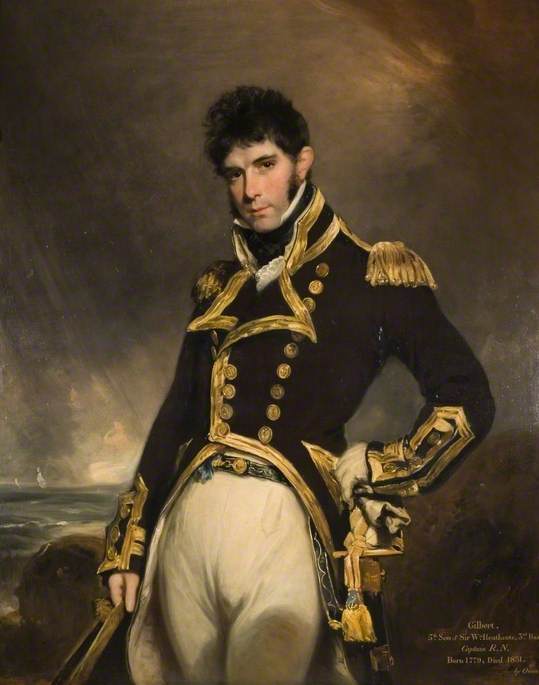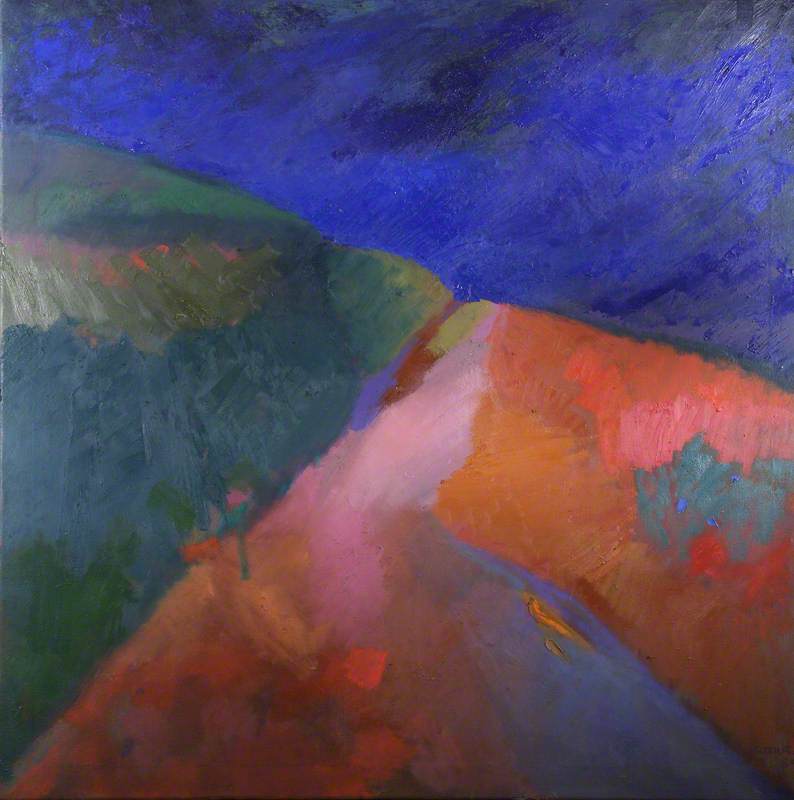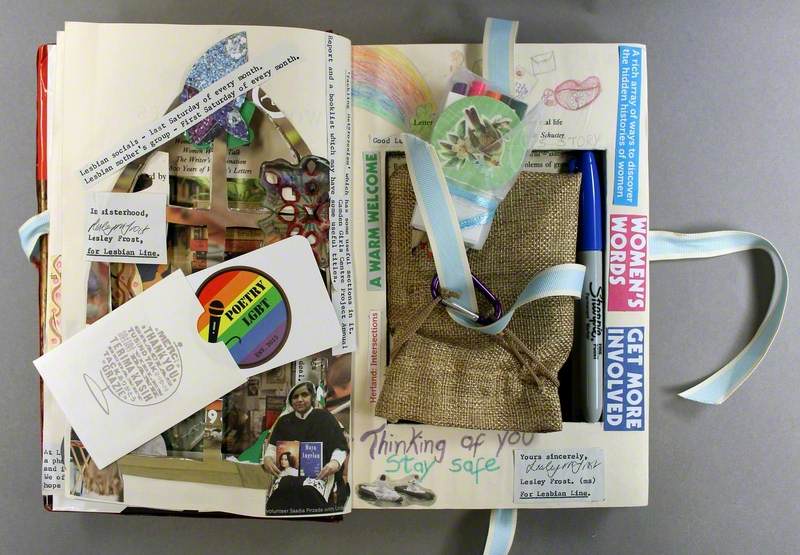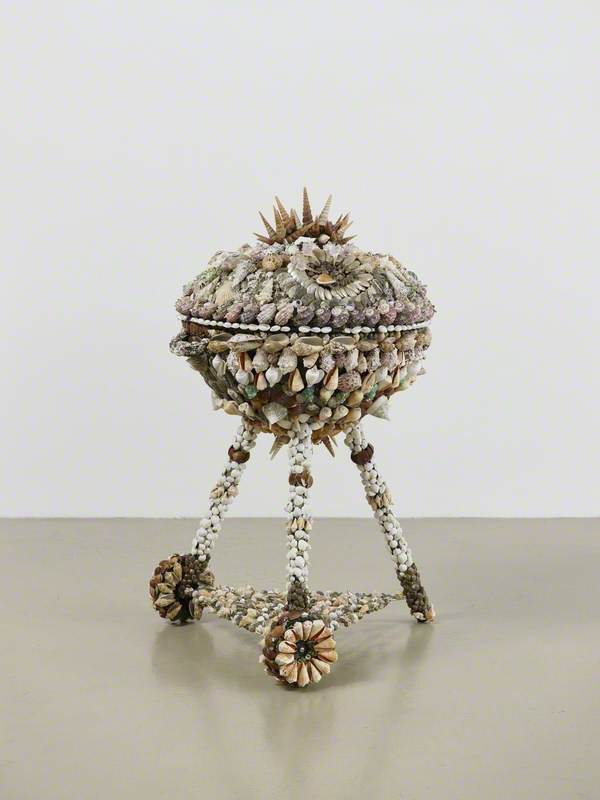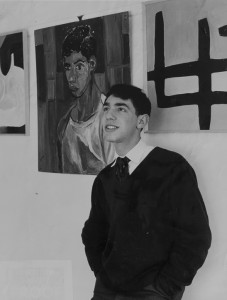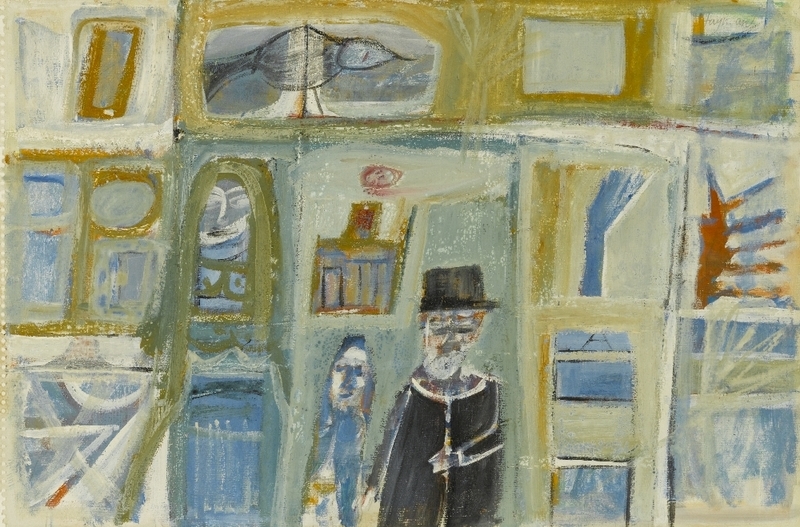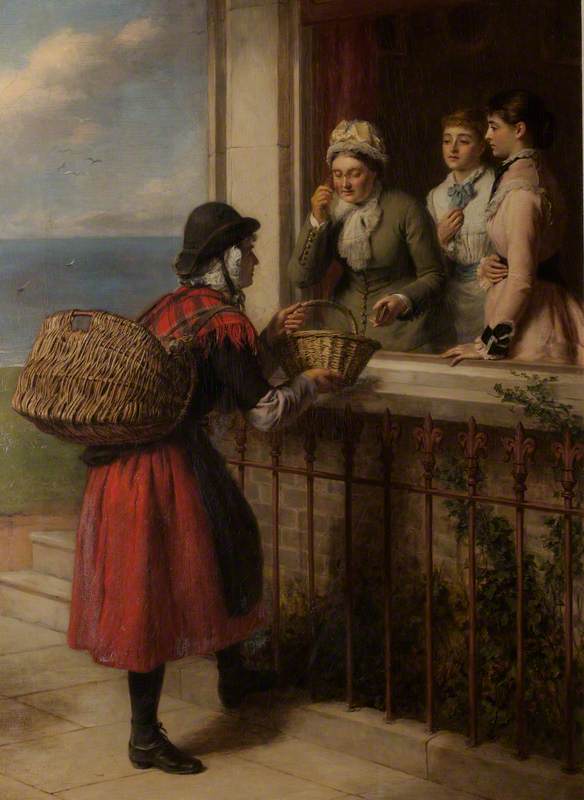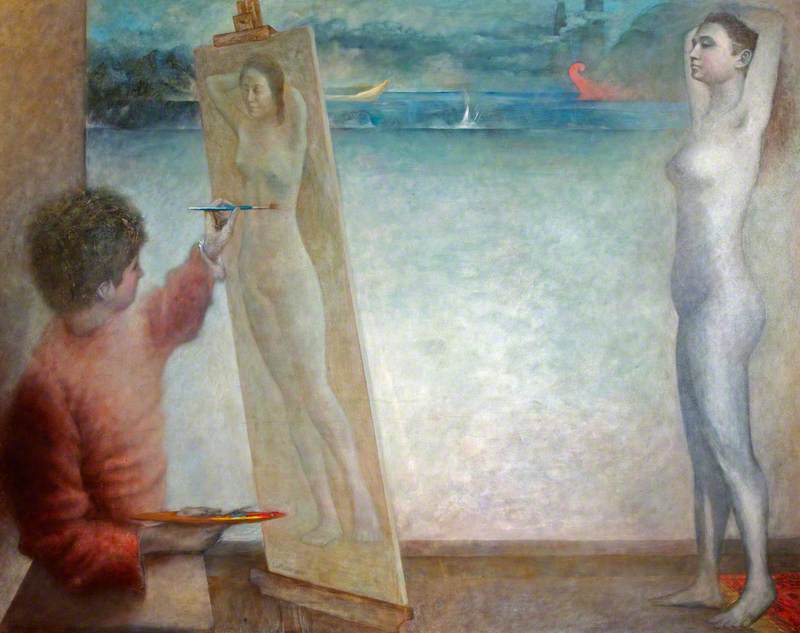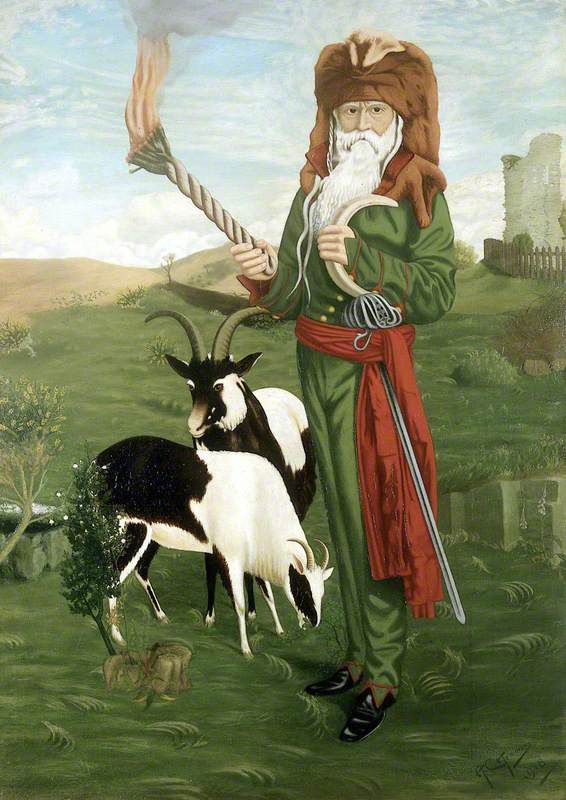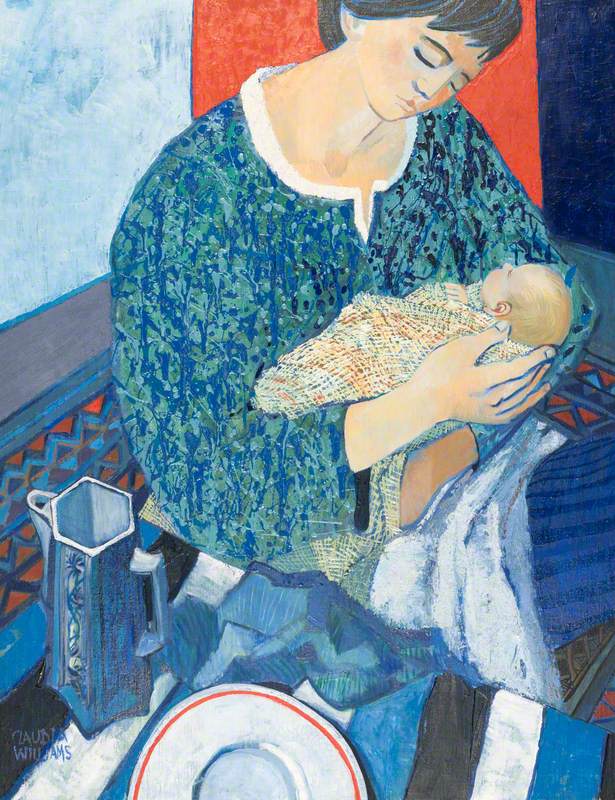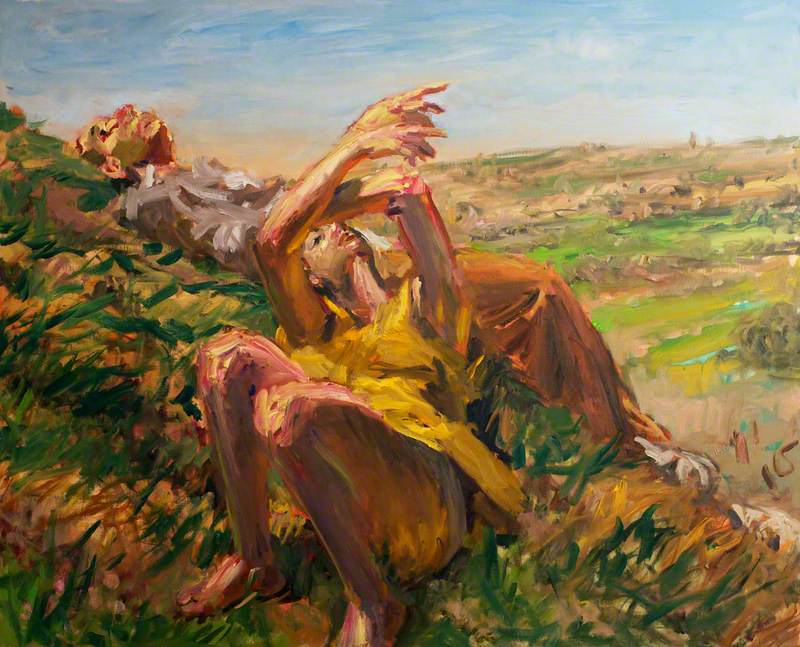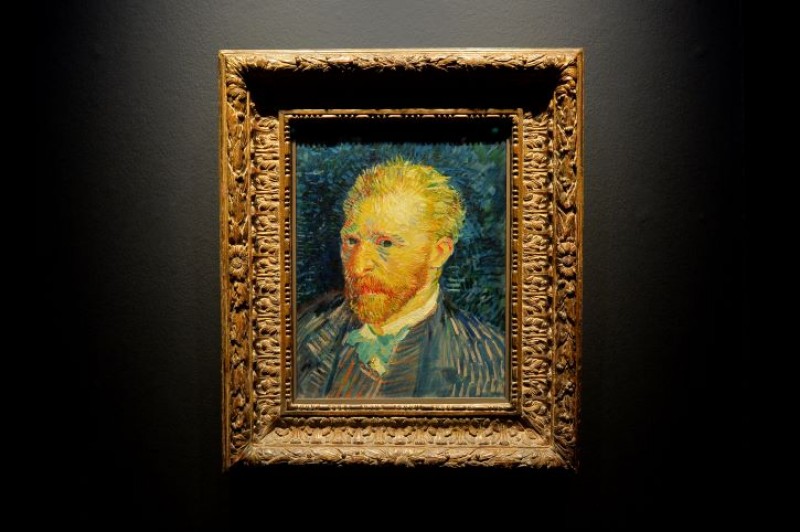Women painters are notoriously absent from art history. And portraits of women are missing from the gallery walls, unless they are the Madonna, royalty or wealthy wives (or serving the male gaze as naked or sexualised objects, of course – there are lots of those!)
Charlotte (Grenville), Lady Williams-Wynn (1754-1830), and her Children
c.1778
Joshua Reynolds (1723–1792) 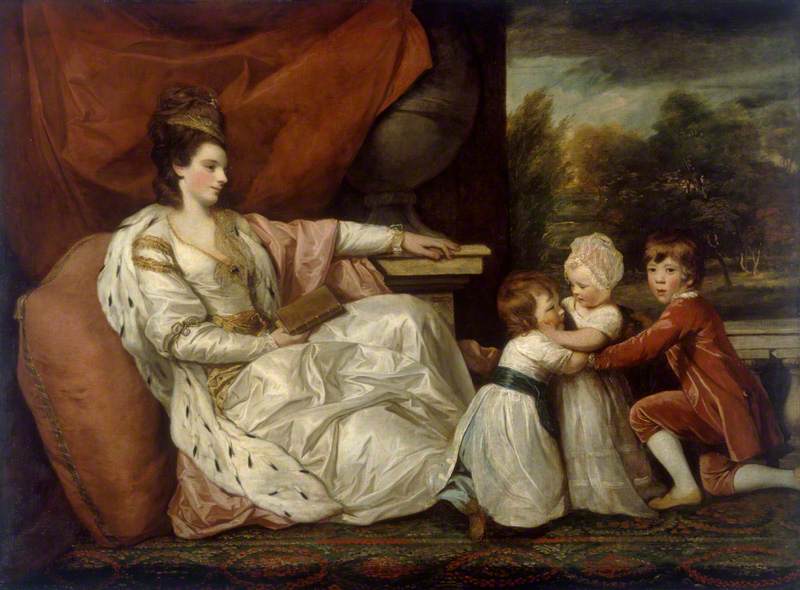
Wales is no different in that respect. Consider, for instance, a stereotypical example of the trophy wife. This is a portrait of Charlotte Williams-Wynn and her children, by the leading portrait painter of the day, Joshua Reynolds. We see symbols of wealth and status in the fashionable interior with a classical vase, richly patterned carpet, landscape painting and sumptuous fabrics of velvet, silk, satin and ermine fur. Charlotte's husband, Watkin Williams-Wynn, came from a powerful Welsh family active in politics and was incredibly wealthy.
Art historian Linda Nochlin asked Why Have There Been No Great Women Artists? back in 1971. Her seminal essay pointed out the multiple institutional barriers which prevent women artists from achieving success. This question continues to puzzle historians today, including Katy Hessel, author of The Story of Art Without Men and creator of The Great Women Artists podcast. The exclusion of women from art history is indefensible, and addressing it is an ongoing battle.
One exceptional example in Wales is the work of portrait artist Seren Morgan Jones. Her work reclaims and reimagines the vital role of women in history, culture, politics and society, particularly in Wales: in a 2015 article, she said, 'there is more to Wales and its history than coal-mining, rugby and men.'
The relationship between portrait painter and sitter is a highly charged, emotional space. But who are the sitters in Seren Morgan Jones' portraits? This artist wants to remind us of unnamed, often disregarded women from history, but where and how can she find them? There is so little recorded historical narrative of ordinary women's lives, that the artist has no choice but to fill the gaps with creative storytelling.
This involves a radical act of re-imagining. Jones scours historical records, museum costume collections, old photographs and police records, mining the past for scraps of lost women to produce composite portraits. She says 'it is important that the viewer can relate to these women and for this they must seem to have once lived.' Fusing real and imagined stories, these portraits are a radical addition to the narrative of what a 'portrait' can be.
In 2015 the artist created 'Portraits of Protesters', a series of paintings of Welsh suffragists. It is exceptionally rare to find these women on canvas. Suffragette Lady Rhondda (Margaret Haig Thomas) was painted by Alice Mary Burton in the 1930s, but she was unusual as a wealthy and successful businessman and campaigner – no one was going to ignore such a passionate feminist!
Margaret Haig Thomas (1883–1958), Viscountess Rhondda
c.1930
Alice Mary Burton (1892–1973) 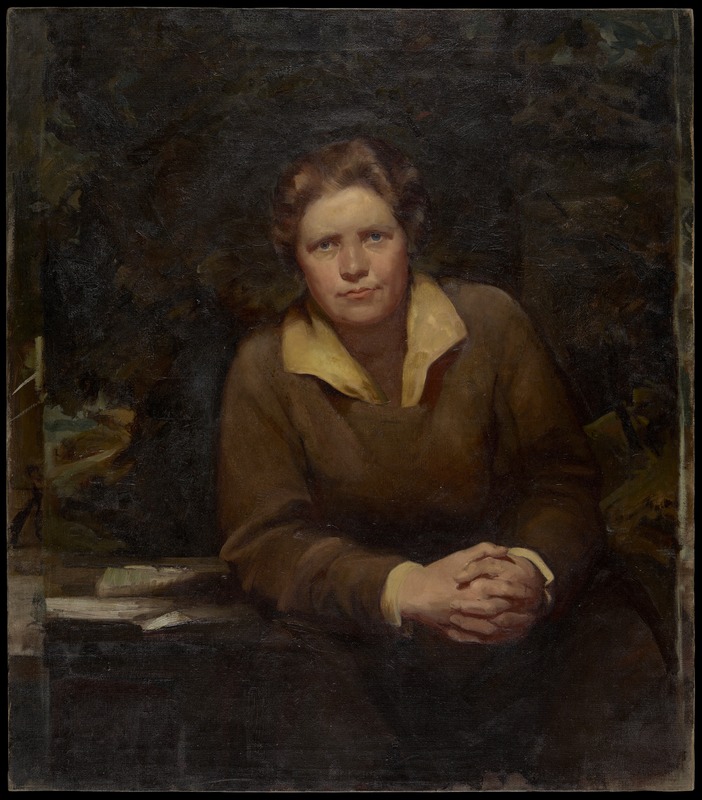
And what about Welsh culture? Apart from the romanticised view of rural Welsh women in costume, women are noticeably absent from the visual history of Wales. In Llygaid Hanes / History's Eyes, Jones said: 'I create an alternative image of Welsh women to counter the representation often seen in tourist shops. Some would argue that this is the only ubiquitous presence of women from Wales' past.'
Welsh Landscape with Two Women Knitting
1860
William Dyce (1806–1864) 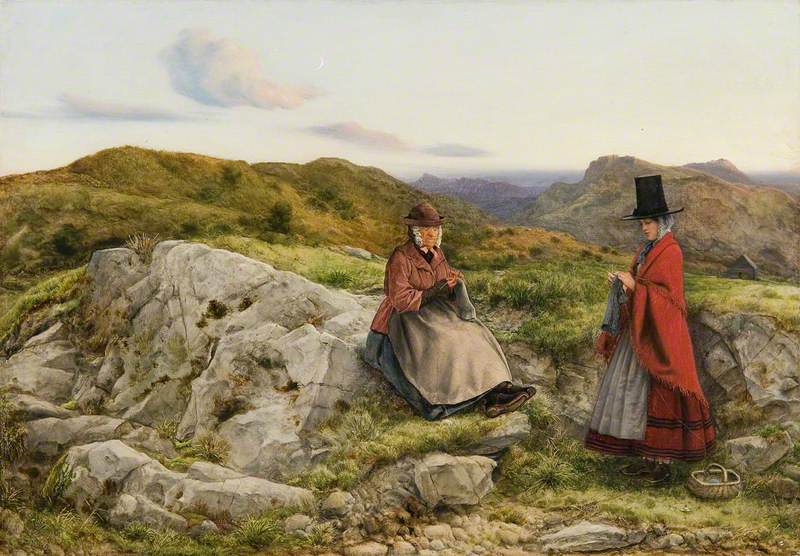
Using classic painterly language, but with a playful feminist twist, Jones creates portraits of Welsh women that challenge tired old clichés. Some of her defiant women may have their breasts partially exposed, or present a cheeky V-sign, as in Gofal plant am ddim, nawr! (Free childcare, now!). But the artist also includes the traditional tall black hat, paisley shawl, and Welsh woollen cloak in the images, giving the viewer a chance to re-consider stereotypes and cultural appropriation.
View this post on Instagram
Another young Welsh artist, Meinir Mathias, similarly challenges traditional representations with her portraits of folk heroes. Her figures challenge gender norms and reacquaint the viewer with the grass-roots reality of Welsh history, all while wearing variations of nineteenth-century national dress. Certainly, these are not the quaint, respectable 'Welsh lady on a tea towel' souvenirs that the world may be used to!
You'll Never Conquer Mam! A Portrait of Jemima Nicholas
2021
Meinir Mathias (b.1981) 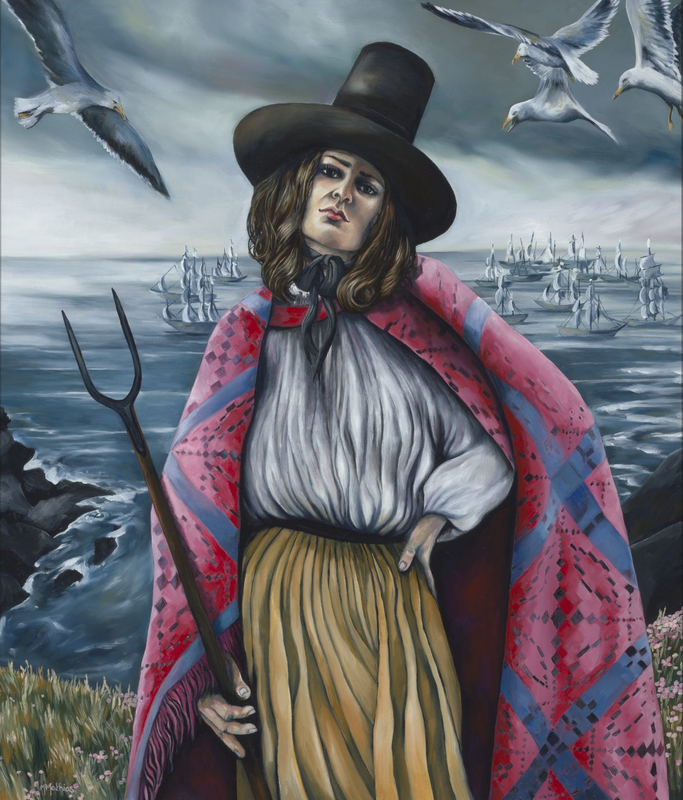
Heading even further back into Welsh mythology, Seren Morgan Jones has painted portraits inspired by the Mabinogion. The medieval tales of Branwen, Rhiannon and Blodeuwedd will be familiar to many adults and schoolchildren in Wales. For Seren Morgan Jones, these mythical images have an intriguing family connection: the artist's grandmother, celebrated artist and illustrator Margaret D. Jones, created images for Gwyn Thomas's version of Tales from the Mabinogion in the 1980s.
Jones brings her grandmother's legacy right up to date with mythological Mabinogi women who age visibly, and have the wrinkles and bodies of real women. On her Facebook page, she said: 'It was important to me to see some of these women characters as older as so often they are depicted as young, thin, Celtic beauties. I think my women are gorgeous and a celebration of getting to live many years.'
Seren Morgan Jones has said that her paintings have aged with her. She wants to celebrate and make visible women's bodies, and their wisdom. Finding so few images of women with natural wrinkles online, she has been known to use her mother as a model. Ageism and fatphobia have no place in her work, and she is clear that there is an element of sexuality that she wants to engage with – one that is self-assured and body-positive.
Despite her contemporary sensibility, her portraits are still very much in the accepted artistic tradition of portraiture. They are strong, realistic head-and-shoulders images, which look out at the viewer with a powerful and direct gaze. There is very little background detail on some – the focus is on the woman.
Others may include distinctive styles of clothing, symbols or personal artefacts – a very traditional method used to give us clues about the subject. In the 'Portraits of Protesters' exhibition catalogue, art historian Mari Griffith said that in 'using old visual traditions she redresses some of the injustices of history.'
One of the many injustices is the dearth of representations of women of different ethnicities in the traditional iconography of Welsh culture. The artist said she feels a sense of duty to highlight the exclusion of minoritised people from modern Welsh art, saying she wants to 'make people rethink their narrow ideas about what it is to be Welsh today.'
Blue Gloves, Orange Chair (Menig Glas, Cadair Oren)
2016
Seren Morgan Jones (b.1985) 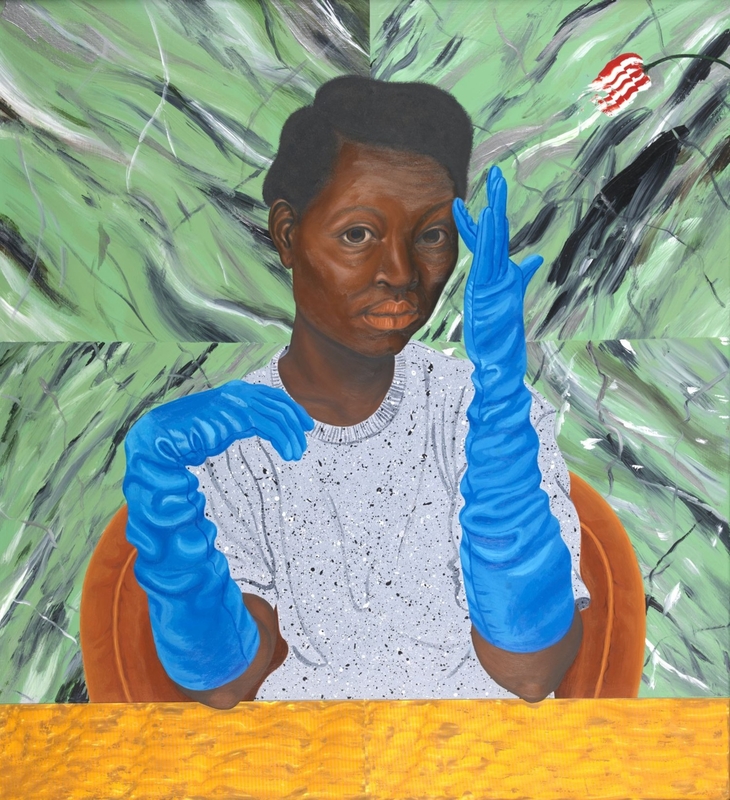
Fascinating and provocative, Seren Morgan Jones' work seeks to expand and explode the nature of traditional portraiture. She urges us to broaden our horizons – the challenging gaze of the women in her portraits demands our attention. Her work provides a new and long-overdue visual landscape for Welsh women.
Candy Bedworth, writer
This content was supported by Welsh Government funding
Further reading
Seren Morgan Jones interview with Cat Gardiner, gallery/ten, 2015
Seren Morgan Jones, Oriel Ffin y Parc Gallery, 2019
Katy Hessel, The Story of Art Without Men, Hutchinson Heinemann, 2022
'It's About Time' exhibition catalogue, Ceredigion Museum, 2018
Karen Price, 'Portraits of Protestors', Wales Online, 2015
Maisie Skidmore, 'Portraits of Defiant Suffragists by Welsh Artist Seren Morgan Jones', It's Nice That, 2015
